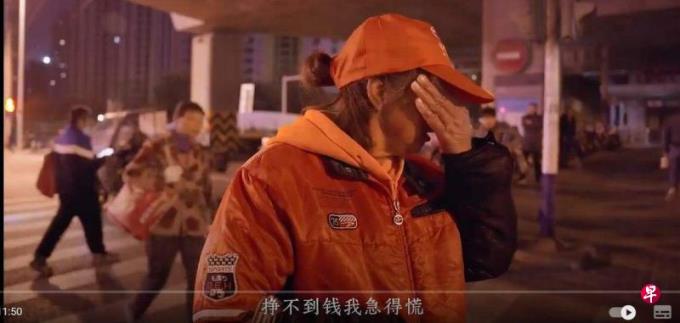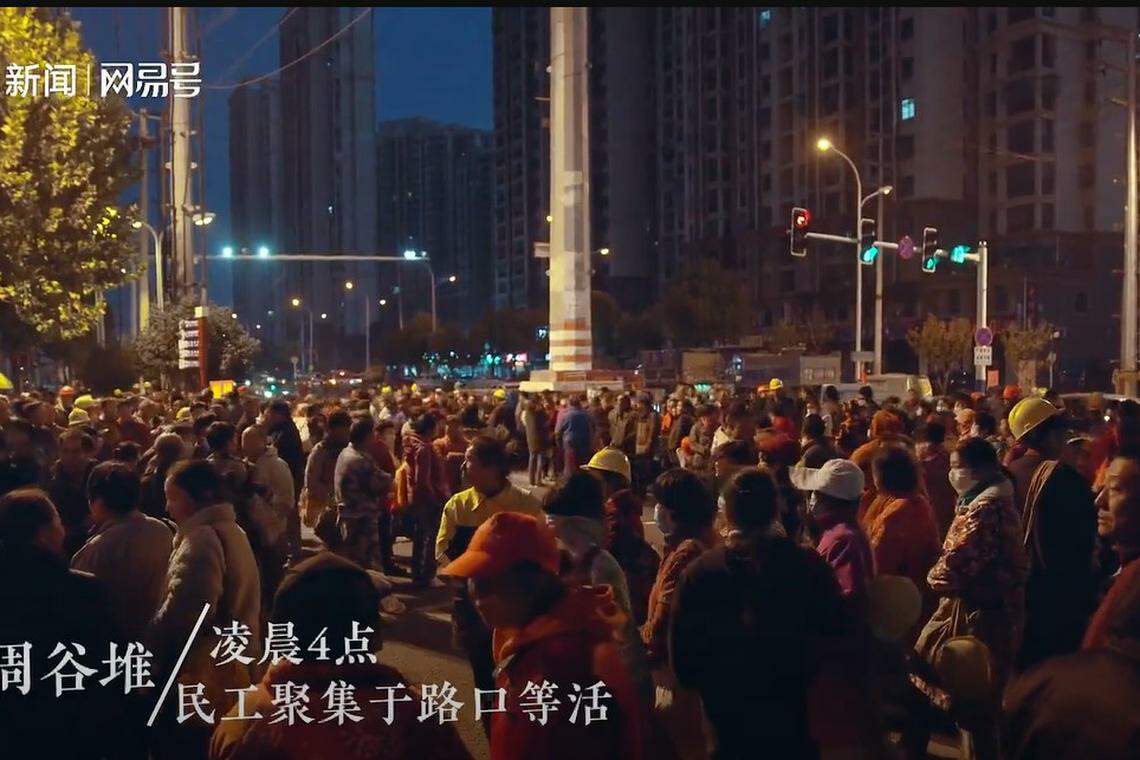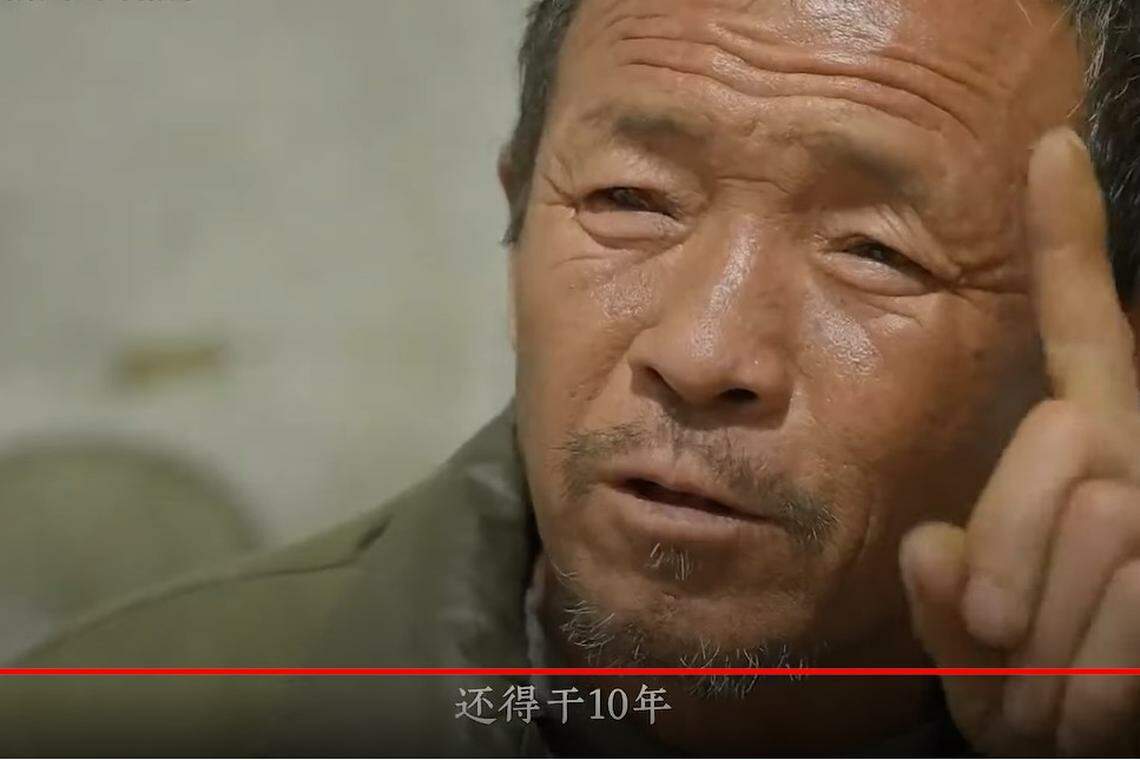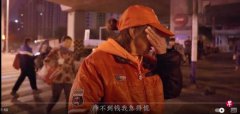
The short films that describe a group of Hefei migrant workers have been circulated on the Internet of China, which once again aroused the attention of older migrant workers.
China Portal Website NetEase Monday (January 8) released a 11 -minute short film called for 30 years.Migrant workers.
Among them, some people waited for a day and did not find any job; some people finally found it, but on the way to the construction site, they received temporary cancellation calls;Child and grandson.
This documentary was deleted shortly after the release, and the NetEase B station account that released the video also showed that it was unable to pay attention.However, there are still some netizens who downloaded the video to use their social media account to "relay".
Netizens believe that the problems of finding difficulties, insufficient protection, and difficulty returning to pensions in the short film are also the epitome of the dilemma of Chinese migrant workers in the Chinese generation of migrant workers.
Can't squat to work
This documentary shows that in the Zhougu Ping labor market in the southeast corner of Hefei, thousands of migrant workers are gathered at 4 am every day.Most of these people are middle -aged, mainly zero workers, wages daily, no contract, no welfare insurance.

One of the 57 -year -old migrant workers Dong Guilan entered the city to work for seven years and lived with her younger son.In order to help her son share the rent, she hopes to find a job as soon as possible.
Dong Guilan said that she usually departs at the labor market at 4 am. Even if she did not encounter a suitable boss in the morning, she must insist on staying at the market until 4 pm to go home.She hadn't waited for her to live in the short film for a week, and she seemed a little anxious.
But she is just one of many migrant workers who can't squat.Chen Huoyang, a well -known caring person in Hefei, has distributed free lunch for migrant workers who did not squat to zero in the beginning of last year.
He said that at first a free lunch was sent to migrant workers. Only a dozen people came to get it, and later gradually became seventy or eighty people, and nearly 200 people came in line a day."I can't find a living migrant worker more, more than the year."
NetEase News analysis, after more than ten years of rapid development, Hefei has basically completed urban construction, and fewer workers needed for infrastructure.In addition, many real estate developers have suspended construction projects, and workers who were originally fixed at the construction site have flowed into the zero -industrial market.Wang Shun, a 49 -year -old carpenter, said that there are fewer developers and less live.
The decrease in the demand for construction workers obviously does not only affect Hefei.China ’s real estate industry has fallen into a downturn since last year, and the new construction area has continued to decline.Data show that in November 2023, the new construction area of real estate nationwide was 875 million square meters, a year -on -year decrease of 21.2%.The 2022 Migrant Workers' Monitoring and Survey Report released by the National Bureau of Statistics of China in April last year showed that the construction industry migrant workers accounted for 17.7%of the overall citizen workers.
Two Dilemma
Older and lack of skills also determines that the competitiveness of older migrant workers is getting smaller and smaller.Chen Huoyang said that most migrant workers in Zhougu Ping's labor market are over 55 years old and have limited cultural levels. Some people are even more difficult to recognize words. They can only do some efforts such as smashing walls, removal, and cleaning."You can only mix in when you go to the construction site. People over 55 years old are basically not needed."
The report released by the National Bureau of Statistics of China shows that among the nearly 300 million Chinese migrant workers, migrant workers over 40 years of age account for 53%, of which 29.2%of migrant workers over 50 years old are 29.2%.In terms of academic qualifications, 17%have high school education, and college and above only 13.7%.
People over 50 years old are called "first generation migrant workers".Qiu Fengxian, associate professor of Anhui Normal University, who has long studied migrant workers for a long time, believes that this generation has not bought a house in cities. After he is older, it is more and more difficult to find. Returning to his hometown is almost the only choice for them.
But it is not easy to return home.On the one hand, there is no savings.The investigation of Qiu Fengxian found that 41.2%of the respondents had worked for more than 20 years, but 55.2%of migrant workers deposited less than 50,000 yuan (RMB, the same below, S $ 9513.7).
On the other hand, insufficient guarantee.Migrant workers who have been working out for many years have no land after returning home, and there is not enough pension and medical security. Rural pensions in many places are less than 300 yuan per month. For living and families, many migrant workers often continue to return to the city, and thenTry to find a job.
Researchers at the China Rural Governance Research Center of Wuhan University in September last September in an article published in national governance, it was said that the trend of returning to the home of Chinese migrant workers was obvious, but a survey of a large number of labor export counties in Hubei Province appeared.The above is a staging home to wait for new job opportunities.
In Netease's documentary, 54 -year -old Wang Zhaoxi has worked in the city for more than ten years. There is a child and a daughter. The son gave birth to a child with his girlfriend at the age of 14.Wang Zhaoxi's son worked at another construction site. The grandson was unattended, and there was no hukou, and his daughter was still studying.He said that he had to survive, "I have to do it for ten years."

Waged for thirty years?
The first generation of migrant workers who witnessed the history of China's reform and opening up are beautiful.Qiu Fengxian said that in addition to improving the family economy, the first generation of migrant workers is to realize the "intergeneration leap". I hope that the son will go to college and can have a stable job or career in the city.The fate, so most of the savings also spent their children's education and marriage.
But the research results of Qiu Fengxian showed that most of the first -generation migrant workers had dropped out of school in junior high school. Less than 20%of those who read colleges and above, and more than 60%of children became the next generation of migrant workers and entered the enter.Only 5.1%of party and government agencies and institutions, only 2.9%of their own business.
At the same time, the unfairness of social security between urban and rural areas has not been eliminated.The previous reports from the media "connected on the front" pointed out that the elderly in the city have a pension base for an average of 3,000 yuan per month, but in the first generation of migrant workers, this number is less than 300 yuan.
Data show that in 2022, the number of people participating in the basic pension of Chinese urban employees is equivalent to 500 million and 549 million people participating in urban and rural residents' insurance.Only 404.4 billion yuan.The gap between expenditure can explain why migrant workers have so much worries.
From this point of view, the vulnerability of the Chinese migrant workers has always been there, but the crown disease epidemic, ChinaSlowing economic growth, downturn in real estate, and the employment market that is not so optimistic has made vulnerability highlight again.
Chinese officials have also begun to attach importance to this issue.The Ministry of Chinese and People's Social Affairs announced on January 5 this year that it has recently issued opinions on strengthening the training of vocational skills in migrant workers.The opinions are put forward that large -scale, wide coverage, and multi -form vocational skills training will be carried out for migrant workers 'groups to promote the improvement of migrant workers' skills and employment and entrepreneurship.
The document also clearly states that in terms of funds, we must coordinate employment subsidy funds, unemployment insurance funds, corporate employee education funds, etc., and support the training of vocational skills of migrant workers.
Government training is a good thing, but it is also necessary to see that more than ten years, more than 85 million migrant workers will enter the age of 60.At that time, their later years, I am afraid that they must not only rely on their own productive forces, but also the government's efforts to make up for the shortcomings of social security and eliminate the dual division of urban and rural areas in order to solve the worries of the two generations.



